#Brand Coveri
Explore tagged Tumblr posts
Text
Crass Family Moodboards & Headcanons
These are moodboards and headcanons for the Crass Family in my Snowbaird AU story, "Feathers & Threads Soaked in Red." I also plan to make some for the Snow Family and the Covey in District 12. If you are curious after reading these, please visit this page and read the story!

Icarus Magnus Crass - played by Richard Madden

Icarus Magnus Crass is the Head of the House of Crass. He was an only child and had an extremely strict upbringing.
Before his current position as Secretary of Defense, he was the youngest soldier to quickly rise to the rank of General.
Icarus was groomed to be the next president by his father should the elderly President Ravinstill have an "unfortunate" demise
He lived an extremely isolated childhood - his education consisted of private tutors before attending the Academy & University
His only comforts in his childhood were Sephia Rose & his piano
Had a long-term engagement to an obscenely wealthy heiress before he went public of his relationship with Sephia Rose and was sent to the military
When he married Sephia Rose, in his vows he told her: "I was born to love you."
He would often use the secret tunnels to watch Sephia Rose sleep when she first came to the manor - he had never met anyone so different and pretty.
Icarus is someone who had every opportunity to grab power, but he chose happiness. In choosing love, he lived a fulfilling life with a wife who he loved more than anything and was blessed with children he would give his life for in a heartbeat. He is who Snow could have been if Coryo had just been medicated.

Sephia Rose/Kore Hayes - played by Haley Bennett

To the Capitol's Elite, she is Kore Hayes. But to herself and her family, only then can she be Sephia Rose.
She and Icarus have built a life together in the capitol, where she is the mother of three children with all Covey names.
Sephia was very scared of Icarus when they first met as children - she didn't know if she was safe around Capitol children.
But she and him quickly got along after he would show her his piano and even play a song of an old lullaby.
Before she founded her clothing brand "Lis et Rose", she modeled for some of the most exclusive clothing brands in the Capitol and even found ways to model her own clothes.
When Icarus enlisted in the military, she presented offerings in the garden to pray for his protection
During the war, she would write letters to Icarus every day while he was on the war front, and she always place a kiss at the end of each letter.
SHe made sure that he children knew all her Covery's skills, including how to garden and cook.
Sephia Rose lived an incredibly harrowing life. But her resilience for hope had helped her find light in the darkest of tunnels. She never lost touch with her roots and often told her children stories of her childhood. She is grateful every day for the love that blossomed between her and her husband.

Laurus Orion Crass - played by Josha Stradowski

Laurus Orion Crass, or Laurie, is the firstborn to Icarus and Sephia Rose and heir to the Crass House and fortune.
Because of his position, Laurie always had a lot of pressure placed on him due to society's expectations for him to be a military man like his father.
He knows that he is very fortunate to have such incredible role models for parents who only gave him support and love while teaching him how to exercise caution
He was a premature baby by almost 4 weeks and had to be placed in the ICU due to his lungs not being fully developed and still sometimes has asthma attacks
Before his godmother died, he would often play at her office whenever he visited due to his health issues as a baby, and this inspired him to want to become a surgeon.
He learned the piano from his father, and it would serve as a great way for them to bond when he came home from work.
He is very proud of the name his mother gave him - Laurus, which means victory, and Orion was his dad's favorite constellation.
Laurie is not a fan of Casca Highbottom - he noticed at a very young age that the Dean would always stay too close to his mother whenever they came in for parent-teacher meetings.
Laurie Orion is no stranger to the Capitol's dangers and hypocrisies and makes it his personal goal to fulfill his godmother's wish of establishing clinics in the districts before her "death." He may or may not have a crush on a particular girl he met in District 4. He is Sejanus Plinth if the boy had some goddamn impulse control.

Agalia Iris Crass - played by Annalise Basso

Agalia Iris Crass is the second eldest and only daughter of Icarus and Sephia Rose.
Because of how much she looks like her mom, her father had always been very protective over her
Agalia was born right before the war broke out - just enough time for her father to cry at her birth.
Ambition + Moxie - she has dreams of becoming a principal ballet dancer by her early 20s.
Her endless curiosity and good heart remind Sephia Rose of Kaety Amaryllis - Aggie often wishes she could remember her godmother.
Like her brother, she takes a lot of pride in her name - irises symbolize hope and valor, and Agalia means joy.
She first remembered dancing at five when her mother sang Lavender's Blue to her baby brother.
She designed and made all her costumes since her very first recital and even crocheted all her sweaters and cardigans.
Aggie Iris is the kind of girl who will fool you with her sweet smile and pretty eyes only to tear you apart with her spitfire spirit. While she despises the inhumane nature of the Hunger Games, she still has a little bit of anger towards the rebels since they "killed" her godmother. While she doesn't remember what she looks like, she swears that she can hear her voice every time she plays her music box.

Arcturus 'Arthur' Lucus Crass - played by kid on pinterest

Arcturus Lucus Crass, or Arthur, is the second son and youngest child of Icarus and Sephia Rose.
The sweetest kid you will ever meet in the history of the world - he's also the most likely to accidentally wander off (his parents got him a leash)
Nature kid with the greenest thumb - he will spend hours on hours with his mom in the greenhouse
Out of all the kids, his temperament and behavior most resemble their mother.
Every animal will fight to the death to protect this kid - every single one of Dr. Gaul's mutts loves him.
Speaking of animals, he has a penchant for walking in public like any animal from ages 2-6, and the leash only encouraged him.
Fell in love with crocheting when he did it with Aggie and Sephia Rose - now he has a playground equivalent to the black market for his toys.
His name was in dedication to his birthplace - the grove filled with amaryllis flowers in his family's garden his mother made to honor her Lillycat.
Arthur Lucus may be a bit naive, but he is not stupid. He's his parents' son after all, and although he is young he does know that there are people who want to hurt the people he loves. But he has a heart so big he loves the whole world, and he even has a fairy godmother who tries to help him in a distant wood when she can.

Tagging: @ethereal-athalia, @valeskafics, @aphroditesmoon, @mitsuki91, @tatumrileyslover, @asa-do-your-thing, @arcielee, @agir1ukn0w, @imsofuckingdonewiththisgoddamn, @dreaming-for-an-escape, @musical-theatre-gay
Please like and reblog and/or comment!
#snowbaird#coriolanus x lucy gray#coriolanus snow x lucy gray baird#coriolanus snow#lucy gray baird#my ocs#oc stuff#my fanfiction#my stuff#my writing#feathers & threads soaked in red#ftsir#the ballad of songbirds and snakes#thg series#the hunger games: the ballad of songbirds and snakes
10 notes
·
View notes
Text
Nike and Hyperice Launch Innovative Tech-Enabled Boots and Vest to Enhance Athlete Warm-Up and Recovery
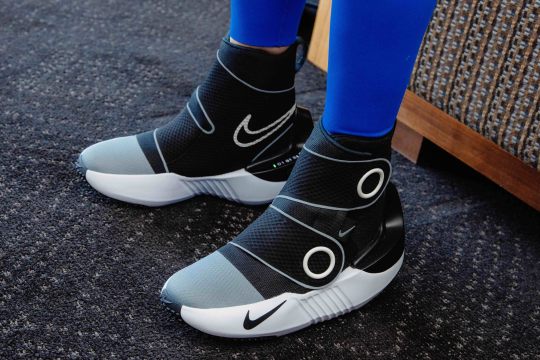
Nike and Hyperice have teamed up to create cutting-edge wearable technology designed to help athletes excel throughout training and competition. Combining Nike's expertise in footwear and apparel with Hyperice's advanced recovery technology, the two brands are pushing the boundaries of athletic performance with their latest innovations.
Meet the Nike x Hyperice Boot and Vest
The collaboration has resulted in the Nike x Hyperice boot and vest, two groundbreaking products aimed at revolutionizing athlete warm-up and recovery.
The Nike x Hyperice Boot
The Nike x Hyperice boot is a wearable, mobile high-top shoe that delivers heat and dynamic air-compression massage on demand. This innovative shoe features dual-air Normatec bladders bonded to warming elements, ensuring even heat distribution throughout the upper. This technology drives heat deep into the muscles and tissues of the feet and ankles, enabling faster natural recovery. Athletes have reported feeling lighter and more prepared, as if they've already completed their warm-up before starting their routine.
Athletes can control the heat and compression levels of each shoe with the press of a button, selecting from three distinct levels powered by a battery pack in each insole.
The Nike x Hyperice Vest
The Nike x Hyperice vest targets a variable of performance historically difficult to control: the environment. Utilizing thermoelectric coolers from the Hyperice X line, the vest provides instant heating and cooling without the need for ice or liquid. This allows athletes to precisely adjust their body temperatures during warm-ups and cool-downs.
Equipped with thermal modules and sensors, the vest autonomously monitors and maintains optimal body temperature. An air bladder and pressure sensor ensure the vest fits comfortably while maximizing the effectiveness of the heating and cooling technology.
Athlete-Driven Innovation
"Recovery is an important part of any athlete’s journey, but we’re hearing from athletes that this concept of ‘pre-covery’ is equally as important," says Tobie Hatfield, Senior Director, Nike Athlete Innovation. "The footwear and vest we’ve developed with Hyperice help get the body ready for activity, whether you’re playing for a title or on your feet a lot at work."
LeBron James, a Nike signature athlete, highlights the impact of these innovations: “Taking care of my body has always been an important part of my preparation as a basketball player. From the moment I tried the Nike x Hyperice boots and vest, I knew they were going to change the game for athletes’ warm-up and recovery.”
The Future of Athletic Performance
Nike and Hyperice continue to gather feedback from athletes as they integrate these products into their training and recovery routines. The brands are committed to pushing the boundaries of what’s possible for today’s athletes, with the Nike x Hyperice innovations set to release at a later date.
“Since the inception of Hyperice, we have taken a lot of inspiration from Nike,” says Anthony Katz, Founder and President of Hyperice. “This collaboration is the culmination of years of work between our two brands to deliver innovative footwear and apparel for athletes, enhancing their performance and recovery. And this is just the start.”
Stay tuned for more updates on the Nike x Hyperice products and hear directly from Nike athletes who tested the vest and boots throughout development.

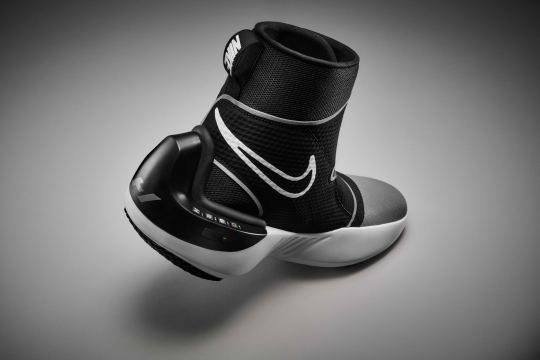

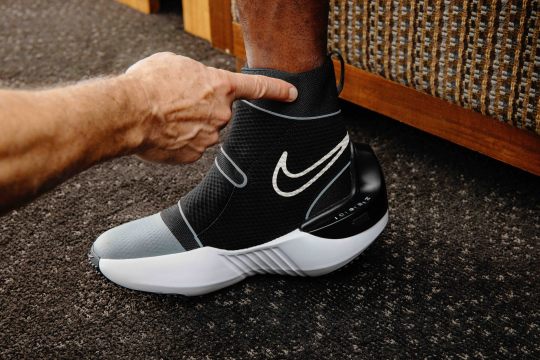
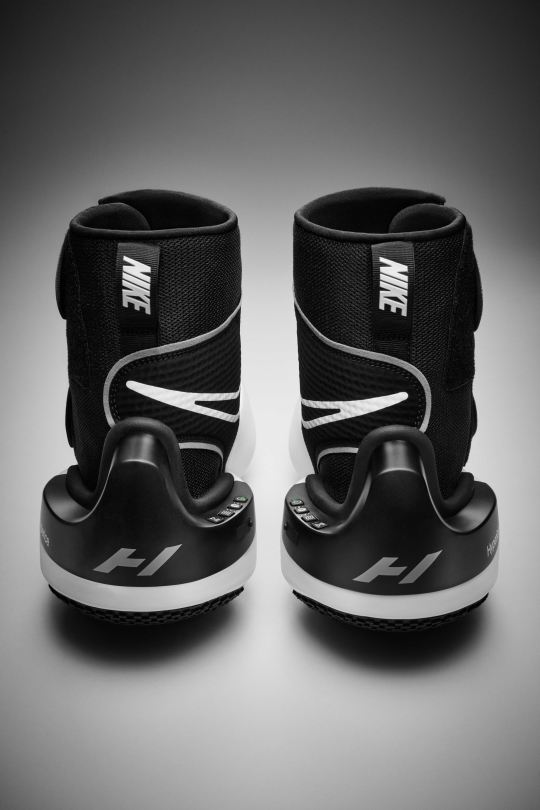





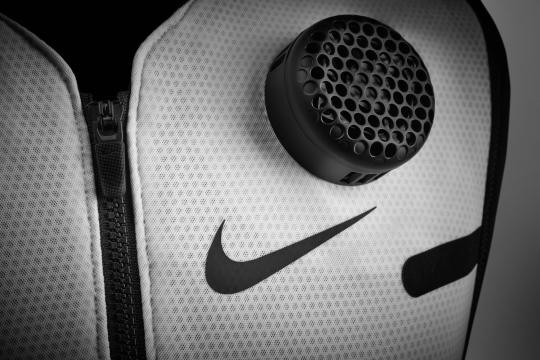
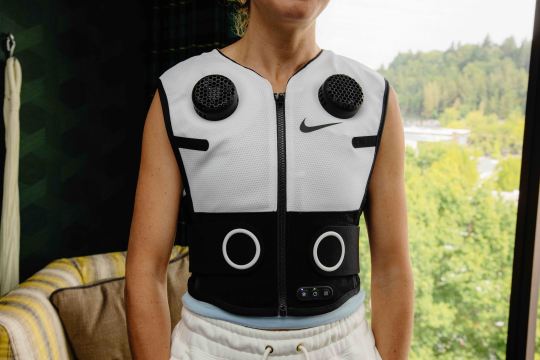

2 notes
·
View notes
Text
Self-Adhesive Labels Market Top Manufacturing Industry Revenue Size & Share Outlook
The self-adhesive labels market is projected to grow from USD 53.2 billion in 2023 to USD 69.2 billion by 2028 at a CAGR of 5.4%. The self-adhesive labels market is influenced by growing demand from packaging companies. The growth of the packaging industry will have a positive impact on the self-adhesive labels market as consumers give preference to packaged branded food as compared to ones that are sold unbranded. Opportunities arise from growing economies. The markets for self-adhesive labels in developed economies such as North America and Europe have become saturated. However, developing markets such as Brazil, India, and China are in a growth stage.
Download PDF Brochure at https://www.marketsandmarkets.com/pdfdownloadNew.asp?id=96664367
Based on nature, the permanentsegmentis projectedto register the highest CAGR during the forecast period. Industries such as food & beverages, electronics, and pharmaceuticals, which often require durable and long-lasting labels for product identification and branding, are driving the demand for permanent labels. These labels are designed to adhere securely to surfaces for an extended period, providing a reliable solution for applications where permanence is crucial.
Based on type, the release liner labels is projectedto register the highest CAGR during the forecast period. The release liner provides a protective backing to the adhesive side of the label, facilitating ease of handling, application, and storage. This feature is particularly advantageous in industries with high-speed labeling processes, where the release liner aids in maintaining label integrity and prevents labels from sticking together. The convenience offered by release liner labels contributes to their increased adoption in various manufacturing and packaging applications.
Based on printing technology, the flexography segmentis projectedto register the highest CAGR during the forecast period. Flexography is a popular printing technology in the self-adhesive label market due to its versatility, cost-effectiveness, and ability to deliver high-quality results. Flexography stands out in its ability to produce crisp and vivid images, a critical factor for labels that play a dual role in conveying information and serving as a branding tool. Its compatibility with various adhesives, further contributes to its widespread adoption in the dynamic and growing self-adhesive label market.
Based on application, the food & beverages segmentis projectedto register the highest CAGR during the forecast period. Self-adhesive labels are estimated to experience high demand from the food & beverage, pharmaceutical, and consumer durable industries; however, the demand from the food & beverage sector is expected to experience a higher growth rate, mainly because of the growing demand for packaged and branded products, and consumer awareness toward the authenticity of the product.
Request For FREE Sample of Report at https://www.marketsandmarkets.com/requestsampleNew.asp?id=96664367
Based on region, Asia Pacificis projectedto register the highest CAGR during the forecast period. The region is experiencing rapid industrialization and urbanization, leading to an increased demand for consumer goods and packaged products. As a result, industries such as food and beverage, pharmaceuticals, and retail are flourishing, driving the need for efficient and attractive labeling solutions.
Major players operating in the self-adhesive labels market include CCL Industries (Canada), Avery Dennison Corporation (US), Multi-Color Corporation(US), Huhtamaki OYJ (Finland), and Coveris (Austria) and others. These companies have reliable manufacturing facilities as well as strong distribution networks across key regions, such as North America, Europe, and Asia Pacific. They have an established portfolio of a robust market presence, reputable offerings, and strong business strategies. Furthermore, these companies have a significant market share, products with wider applications, a broader geographical presence, and a larger product footprint.
#Self-Adhesive Labels Market#Self-Adhesive Labels#Self Adhesive Labels#Self Adhesive Label#Self-Adhesive Label
0 notes
Link
Following extensive investments in its medical production facilities, Coveris has announced that it is now consolidating its capabilities and medical offerings under one brand name: MediFlex. #BioTech #science
0 notes
Text
The Shrink Bundling Films Market is projected to grow from USD 1,589.66 million in 2024 to USD 1,929.3 million by 2032, reflecting a compound annual growth rate (CAGR) of 2.45%.The global shrink bundling films market is experiencing significant growth, driven by the increasing demand for efficient and cost-effective packaging solutions. These films are widely used across various industries, including food and beverage, pharmaceuticals, consumer goods, and logistics, for bundling multiple products together, enhancing product visibility, and ensuring protection during transportation.
Browse the full report at https://www.credenceresearch.com/report/shrink-bundling-films-market
Market Overview
Shrink bundling films are a type of polymer plastic film that shrinks tightly over whatever it is covering when heat is applied. They are commonly made from materials such as polyethylene (PE), polyvinyl chloride (PVC), and polyolefin. The primary function of shrink bundling films is to provide a secure and tamper-evident seal around products, which is crucial for maintaining product integrity and safety.
Key Drivers of Market Growth
1. Rising Demand in the Food and Beverage Industry: The food and beverage industry is a major consumer of shrink bundling films. The need for hygienic, durable, and visually appealing packaging solutions has propelled the adoption of these films. Shrink bundling films help in protecting food products from contamination, extending shelf life, and enhancing brand visibility through clear packaging.
2. Growth in E-commerce and Retail Sectors: The surge in e-commerce and retail activities has significantly boosted the demand for efficient packaging solutions. Shrink bundling films are preferred for their ability to bundle products securely, making them ideal for packaging multiple items together for ease of handling, transportation, and storage.
3. Advancements in Packaging Technology: Technological advancements have led to the development of high-performance shrink bundling films that offer superior clarity, strength, and shrinkage properties. Innovations in film manufacturing processes have also enabled the production of thinner yet stronger films, reducing material usage and overall packaging costs.
4. Environmental Concerns and Sustainable Packaging: The growing awareness of environmental issues has spurred the demand for sustainable packaging solutions. Manufacturers are focusing on developing eco-friendly shrink bundling films made from biodegradable and recyclable materials. This trend aligns with the global shift towards reducing plastic waste and promoting circular economy practices.
Future Prospects
The future of the shrink bundling films market looks promising, with continuous advancements in packaging technology and the growing emphasis on sustainability. Key players in the market are focusing on research and development to introduce innovative and eco-friendly packaging solutions. Collaborations and partnerships with end-use industries are also expected to drive market expansion.
Furthermore, the increasing investments in infrastructure and the growth of the e-commerce sector are likely to create lucrative opportunities for the shrink bundling films market. The shift towards lightweight and cost-effective packaging solutions will continue to shape the market dynamics in the coming years.
Key Player Analysis
AEP Industries Inc.
Amcor Limited
Bemis Company, INC
Berry Plastics Corporation
Ceisa Packaging SAS
Coveris Holdings S.A
Novolex
Paragon Films Incorporated
Hood Packaging Corporation
SIGNODE Industrial Group
Bollore
ROBAPAC
Segments:
Based on Material:
Low Density Polyethylene (LDPE)
Linear Low Density Polyethylene (LLDPE)
Medium Density Polyethylene (MDPE)
High Density Polyethylene (HDPE)
Polypropylene
Other Plastics
Based on Thickness:
Below 15 microns
15 to 25 microns
Above 25 microns
Based on End Use:
Food and Beverage
Cosmetics, Personal Care, and Home Care
Pharmaceuticals
Transport and Logistics
Printing and Publishing
Other Industrial
Based on the Geography:
North America
The U.S.
Canada
Mexico
Europe
Germany
France
The U.K.
Italy
Spain
Rest of Europe
Asia Pacific
China
Japan
India
South Korea
South-east Asia
Rest of Asia Pacific
Latin America
Brazil
Argentina
Rest of Latin America
Middle East & Africa
GCC Countries
South Africa
Rest of the Middle East and Africa
Browse the full report at https://www.credenceresearch.com/report/shrink-bundling-films-market
About Us:
Credence Research is committed to employee well-being and productivity. Following the COVID-19 pandemic, we have implemented a permanent work-from-home policy for all employees.
Contact:
Credence Research
Please contact us at +91 6232 49 3207
Email: [email protected]
Website: www.credenceresearch.com
0 notes
Text
Rigid Packaging Market Outlook: Global Trends and Forecast Analysis (2023-2032)

The global demand for Rigid Packaging was valued at USD 395148.2 Million in 2023 and is expected to reach USD 667594.5 Million in 2032, growing at a CAGR of 6.00% between 2024 and 2032.
The rigid packaging market refers to the industry segment that focuses on producing packaging solutions which are inflexible or non-deformable, typically made from materials such as plastics, glass, metals, or cardboard. This type of packaging is essential for products requiring high protection against impacts, moisture, and other environmental factors. Common examples of rigid packaging include glass bottles, aluminum cans, plastic containers, and corrugated boxes. Rigid packaging is widely used across various sectors including food and beverages, pharmaceuticals, cosmetics, and industrial goods due to its ability to preserve product integrity and extend shelf life. The market is influenced by factors such as consumer demand for durable and sustainable packaging, regulatory frameworks on packaging waste, and innovations in materials and design that aim to reduce environmental impact while improving functionality.
Rigid packaging refers to packaging solutions that are non-flexible and designed to retain their shape under stress, providing robust protection for the contents they hold. This type of packaging is primarily made from materials that are hard and sturdy, such as glass, metals (like aluminum and steel), plastics, and thick paperboard or cardboard. The main characteristic of rigid packaging is its ability to maintain its shape and protect its contents from external forces, making it especially suitable for products that are fragile, perishable, or heavy.
The use of rigid packaging spans across multiple industries including food and beverage, pharmaceuticals, cosmetics, and industrial manufacturing. For instance, in the food and beverage industry, rigid packaging like glass jars and aluminum cans are favored for their ability to preserve the freshness of foods and beverages and prevent contamination. In the pharmaceutical sector, rigid packaging is crucial for ensuring the safety and integrity of medications, which may be susceptible to degradation from exposure to light, air, or moisture.
Additionally, rigid packaging often plays an important role in branding and marketing, as it provides substantial surface areas for high-quality graphics and product information, enhancing shelf appeal and consumer engagement. Despite its advantages, rigid packaging faces challenges related to environmental sustainability, as many rigid materials are less likely to be recycled compared to their flexible counterparts. In response to growing environmental concerns, there is an increasing push in the rigid packaging industry towards using recyclable materials and reducing the overall environmental footprint of packaging production and disposal. This shift is driven by both regulatory changes and consumer demand for more sustainable packaging options.
Major Key Players-
Amcor Limited (Australia)
COVERIS (Austria)
Reynolds (U.S.)
Berry Global Inc (U.S.)
ALPLA (Austria)
Sonoco Products Company (U.S.)
Sealed Air (U.S.)
Silgan Holdings Inc. (U.S.)
Plastipak Holdings Inc. (U.S.)
Consolidated Container Company (U.S.)
BALL CORPORATION (U.S.)
DS Smith (U.K.)
Georgia-Pacific (U.S.)
Holmen Group ( Sweden)
Mondi (Austria)
More About Report- https://www.credenceresearch.com/report/rigid-packaging-market
Market Drivers-
Consumer Demand for Durability and Protection: Rigid packaging offers superior protection for products against mechanical damage and environmental conditions, making it a preferred choice for fragile items, perishable goods, and high-value products. This demand drives the market, especially in sectors like food and beverages, pharmaceuticals, and electronics.
Regulatory Requirements: Compliance with stringent safety and quality standards in industries such as pharmaceuticals and food and beverages necessitates the use of reliable packaging solutions. Rigid packaging often meets these regulatory requirements better due to its robustness and barrier properties, pushing its adoption.
Sustainability Initiatives: Despite concerns over waste, there is a significant push towards making rigid packaging more sustainable. Innovations that reduce the weight of materials, improve recyclability, or incorporate biodegradable materials are becoming increasingly important. Companies are investing in these areas to meet both regulatory demands and consumer preferences for environmentally friendly products.
Technological Advancements: Advancements in packaging technologies, such as smart packaging solutions that incorporate QR codes, RFID tags, and sensors, are more easily implemented with rigid packaging. These technologies can enhance the functionality of the packaging, providing features like tracking, tamper evidence, and enhanced consumer interaction.
Urbanization and Changing Consumer Lifestyles: Rapid urbanization and the shift towards busier lifestyles increase the demand for convenience foods and consumer goods, which in turn boosts the need for effective packaging solutions. Rigid packaging, with its convenience features such as resealability and durability, is well-suited to meet these demands.
Economic Growth and Increasing Disposable Incomes: As economies grow and consumer disposable incomes increase, there is a higher consumption of packaged goods. This economic shift drives the demand for more sophisticated and high-quality packaging, benefiting the rigid packaging market.
Health and Safety Concerns: In sectors like pharmaceuticals and food products, health and safety concerns dictate the need for packaging that guarantees product integrity and safety. Rigid packaging, which often provides better protection from contamination and tampering, is favored in these contexts.
Segmentation-
By Material Type:
Plastic
Glass
Metal
Paper & Paperboard
Wood
By Product Type:
Bottles & Jars
Cans & Tins
Boxes & Cartons
Trays & Tubs
Drums & Barrels
Browse the full report – https://www.credenceresearch.com/report/rigid-packaging-market
Browse Our Blog: https://www.linkedin.com/pulse/rigid-packaging-market-analysis-global-industry-trends-forecast-tcjvf
Contact Us:
Phone: +91 6232 49 3207
Email: [email protected]
Website: https://www.credenceresearch.com
0 notes
Text
WEEK 03 SEMIOTICS
The way i understood “semiotics” is that it is a way of communication, Using signages, gestures, logos and other linguistic and non linguistic ways to exchange informations. My 2 main understanding of semiotics is signfied and signifer, A signifier can come in 3 types, icon, index and symbol. To me as an aspiring designer, its important to understand semiotics as it is essential to the world of design. Symbols play a pivotal role in design, serving as powerful tools to convey messages, evoke emotions, and communicate complex ideas efficiently. In graphic design, signs are used to convey messages, advertise products, and build brand identity. From billboards and posters to digital banners and social media graphics, signs capture attention and communicate information effectively through typography, imagery, and color. A well-designed sign not only grabs viewers' attention but also conveys the intended message clearly and memorably. Signs to me are a succesful way to covery and communicate something to someone, signs usually consist of signifiers and signified but there signs that only requires a signified, to make it more universal and easier to undertsand. Understanding semiotics enables analysts to decode cultural texts, uncover hidden meanings in advertisements, dissect the structure of language, and grasp the symbolic dimensions of human behavior. It's a powerful tool for interpreting and critiquing the myriad ways meaning is constructed and communicated in society, shedding light on the intricate web of symbols that shape our perceptions and interactions.


Word count: 275
0 notes
Text
Revolutionizing Supply Chains: The Role of Fresh Meat Packaging Market

The Fresh Meat Packaging market is estimated to be valued at US$ 2.21 Bn in 2023 and is expected to exhibit a CAGR of 3.5% over the forecast period 2023 to 2030, as highlighted in a new report published by Coherent Market Insights. Market Overview:
Fresh meat packaging mainly refers to materials used for packaging fresh and raw meat in order to increase its shelf life. Key types of packaging include modified atmosphere packaging, vacuum skin packaging, vacuum thermoformed packaging, and foam trays. These packaging types help extend the shelf life of meat by protecting it from contamination and oxidation. An increase in meat consumption globally is expected to propel demand for effective packaging solutions in the coming years. Market Key Trends:
Growing focus on sustainable packaging is expected to be a key trend in the fresh meat packaging market. Rising environmental concerns are pushing packaging manufacturers to develop innovative and eco-friendly solutions. biodegradable and compostable film made from materials such as pulp and paper are gaining popularity. Recyclable packaging using post-consumer resins is also growing. Moreover, plastic waste reduction initiatives by governments worldwide are promoting the use of alternative sustainable packaging formats. Packaging suppliers are actively investing in R&D to launch novel packaging incorporating recycled content and made from renewable resources like sugarcane bagasse. This is expected to support market growth while meeting sustainability goals over the forecast period.
Porter’s Analysis:
Threat of new entrants: The fresh meat packaging market requires large investments in infrastructure and machinery, which poses a barrier for new players. Compliance with stringent food safety standards further increases the barrier.
Bargaining power of buyers: Buyers have moderate bargaining power due to the availability of alternatives. However, branding and product differentiation practiced by established players provides some advantage.
Bargaining power of suppliers: A few globally organized players dominate the supply market. However, availability of substitutes keeps their bargaining power in check.
Threat of new substitutes: Substitutes include packaging alternatives like modified atmosphere packaging. However, ease of use favors fresh meat packaging.
Competitive rivalry: The market is highly competitive with the dominance of top players.
SWOT Analysis:
Strength: Established distribution network, economies of scale, product innovation for safety and shelf-life extension.
Weakness: High capital requirements, reliance on commodity prices, vulnerability to supply chain disruptions.
Opportunity: Growth in organized retail, income levels in developing regions, convenient packaging formats.
Threats: Stringent regulations, environmental impact of plastic, increasing input costs.
Key Takeaways
The global fresh meat packaging market is expected to witness high growth, exhibiting CAGR of 3.5% over the forecast period, due to increasing consumption of protein-rich diets. North America dominates the market currently due to high meat consumption levels. Regional analysis- Asia Pacific is expected to be the fastest growing market during the forecast period. This is attributed to rising disposable income, westernization of diets, and expansion of retail infrastructure in countries like China and India. Key players- Key players operating in the fresh meat packaging market are Amcor Limited, E.I. du Pont de Nemours & Co, Bemis Company, Inc., Berry Plastic Group, Winpack Ltd., Sealed Air Corp., Crown Holdings, Reynolds Group, Coveris Holdings S.A., and Sealpac International BV. These established players cater to various product segments and have a strong global presence.
1 note
·
View note
Text
Driving Change: How the Plastic Package Industry is Embracing ESG Principles
The ubiquity of plastic package has put the spotlight on environmental, social and governance (ESG) as industry leaders take a leap towards decarbonization and circular economy. Incumbent manufacturers are harnessing sustainable packaging solutions to protect the environment, foster the planet and underscore society. There is no denying that packaging ensures product quality and safety; however, pervasive plastic pollution has been the major bottleneck towards sustainability goals.
According to UNEP, humanity produces over 430 million tons of plastic annually, while 280 million tons of short-lived plastic products become waste. Moreover, the packaging sector is the largest generator of plastic waste — the figure is likely to be logged at 1,014 million metric tons of plastic waste per year in 2060. Besides, the Ellen MacArthur Foundation claims 20 trillion flexible packaging items, including sachets and pouches, would end up in the ocean by 2040, provided regulator measures and binding policy are not taken.
Governing bodies and watchdogs are leaving no stone unturned to underscore socially responsible investment (SRI). ESG reporting can have a considerable impact on the strategies and operations of the firm, prompting leaders to advance toward the circular packaging economy.
Is your business one of the participants in the Plastic Package Industry? Contact us for focused consultation around ESG Investing, and help you build sustainable business practices
Mondi Harnesses Challenges & Opportunities with Climate Change
Companies with high ESG ratings tend to plan better for the future and boost returns. Predominantly, investors, insurers and lenders are eager to know how organizations are responding to environmental changes, the emergence of technology and customer behavior shifts. In essence, Mondi is on track to minimize specific waste to landfill by 30% by 2030. The U.K.-based company is gearing up to create 100% reusable, recyclable, or compostable plastic packaging by 2025. The global giant has undergirded recyclability with an emphasis on structures with 30–50% material made from post-consumer resin (PCR). In doing so, it will work with recyclers to enhance the quality of the recycled resins, remove hard-to-recycle components and redesign packaging to mono-material solutions.
Amcor Uncovers Future-Driven Approach Keeping People at the Center
Businesses are increasingly emphasizing social goals to enhance financial performance, manage risk, boost reputation and comply with regulations. A commitment to inclusion and diversity, employee health & wellness, product safety and employee training can help companies build stronger relationships with stakeholders. The community pillar at Amcor has formed a global network of representatives to bolster the deployment of the company’s DEI (diversity, equity and inclusion) agenda. It also conducted OurVoice@Amcor global feedback survey in FY 2023 to launch programs for more employee-centric and future-focused workplaces. Besides, Amcor went on to onboard more than 40 Afghans and about a dozen of Congolese team members in one year.
Coveris Adds Value through Governance
Robust corporate governance practices have become second to none in maintaining accountability, mitigating risks and fostering performance. In essence, sound risk management, ethics & compliance, transparency and board diversity can have a notable impact on brand reputation, financial condition and business operations. Coveris asserts it complies with tax laws, human trafficking, tax laws and regulatory compliance. According to the UK Tax Disclosure Policy published by Coveris on November 10, 2023, the senior management of the UK entities manages and controls the tax function (and related risks). The policy suggests the UK Group does not facilitate/tolerate tax evasion and it may claim properly available allowances, incentives, exemptions, credits, or other government-granted reliefs.
Making a Difference with ESG Reporting
Stakeholders, including customers, manufacturers, suppliers, governments and NGOs, are developing recyclable materials, fostering sustainable packaging for strength, safety and barrier attributes. Authentic information on the environmental footprint, contribution to society, tax transparency and corruption will place companies cut above the rest.
ESG reporting has become the silver lining amidst brands striving to enhance their position in the competitive market. Companies disclosing environmental data can assess the impact of plastic packaging, commit to proactive action and report on progress with transparency. In April 2023, CDP announced that it would add plastics to its environmental disclosure system for the first time, leveraging 6,743 organizations to disclose their plastic-related impacts, including that of plastic packaging.
As stakeholders embed ESG in roles, activities and responsibilities, companies are bullish towards investments in plastic circular economy, health & wellbeing, DEI and product and employee safety. The global plastic package market size, pegged at USD 355 billion in 2021, could depict around 4.2% CAGR between 2022 and 2030, according to Grand View Research. With suppliers and manufacturers making strides to meet packaging goals, the spotlight will continue to remain on socially responsible investing.
Related Reports:
Green Packaging Industry ESG: https://astra.grandviewresearch.com/green-packaging-industry-esg-outlook
Bioplastics Industry ESG: https://astra.grandviewresearch.com/bioplastics-industry-esg-outlook
Recycled Plastic Industry ESG: https://astra.grandviewresearch.com/recycled-plastic-industry-esg-outlook
About Astra — ESG Solutions By Grand View Research
Astra is the Environmental, Social, and Governance (ESG) arm of Grand View Research Inc. — a global market research publishing & management consulting firm.
Astra offers comprehensive ESG thematic assessment & scores across diverse impact & socially responsible investment topics, including both public and private companies along with intuitive dashboards. Our ESG solutions are powered by robust fundamental & alternative information. Astra specializes in consulting services that equip corporates and the investment community with the in-depth ESG research and actionable insight they need to support their bottom lines and their values. We have supported our clients across diverse ESG consulting projects & advisory services, including climate strategies & assessment, ESG benchmarking, stakeholder engagement programs, active ownership, developing ESG investment strategies, ESG data services, build corporate sustainability reports. Astra team includes a pool of industry experts and ESG enthusiasts who possess extensive end-end ESG research and consulting experience at a global leve
Need expert consultation around identifying, analyzing and creating a plan to mitigate ESG risks related to your business? Share your concerns and queries, we can help!
#Plastic Package Market#ESG packaging#Plastic Package Industry#ESG Report#Plastic Package Industry ESG#sustainability
0 notes
Text
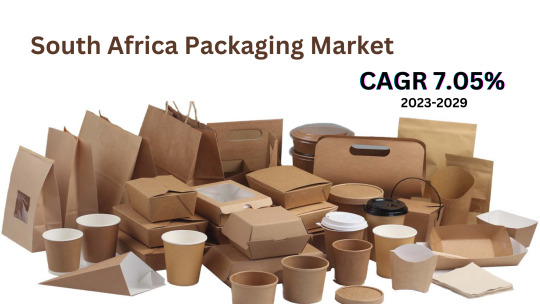
South Africa packaging market size at USD 4.67 billion in 2022. During the forecast period between 2023 and 2029, BlueWeave expects South Africa packaging market size to grow at a significant CAGR of 7.05% reaching a value of USD 7.03 billion by 2029. Major growth drivers for the South Africa packaging market include population growth and rapid urbanization, changing consumer lifestyles, and increasing industrial activities. The surge in household disposable income is driving demand for convenient food items, propelling the fresh food packaging market. According to the South African Reserve Bank, the country's households had an average disposable income of ZAR 50,000 (USD 2,756.22) in 2021, up from ZAR 47,830 (USD 2,636) in 2020. Also, urbanization and mobility trends are pushing the use of small packs and multipacks, creating opportunities for brand switching among manufacturers and saving shelf space for traders. Increased urbanization and health awareness have also boosted the consumption of food, beverages, and alcohol, leading to varying packaging trends, including the use of glass containers and bottles. As of May 2022, the Consumer Price Index (CPI) for food and non-alcoholic beverages in South Africa is at 105.5 points, up 7.4 points from the previous year. However, changing consumer preferences and market trends is anticipated to restrain the overall market growth during the period in analysis.
South Africa Packaging Market – Overview
South Africa packaging market refers to the industry that involves the design, manufacturing, and distribution of various types of packaging materials and solutions within the geographic region of South Africa. It encompasses a wide range of packaging options, including but not limited to flexible packaging, rigid packaging, paper and board packaging, metal packaging, glass packaging, and plastic packaging. The packaging industry in South Africa plays a vital role in supporting various sectors, such as food and beverages, pharmaceuticals, personal care products, industrial goods, and more. It serves to protect, preserve, and present products for distribution, sale, and consumption, while also meeting safety, quality, and regulatory standards. The market is influenced by factors such as population growth, urbanization, consumer preferences, industry trends, technological advancements, sustainability concerns, and economic conditions. As the demand for packaged goods continues to evolve, the South Africa packaging market adapts to meet the changing needs and preferences of businesses and consumers.
Sample Request @ https://www.blueweaveconsulting.com/report/south-africa-packaging-market/report-sample
⏹𝐌𝐚𝐣𝐨𝐫 𝐩𝐥𝐚𝐲𝐞𝐫𝐬: ☑International Paper ☑Mondi Group, ☑Smurfit Kappa ☑Tecnicarton ☑WestRock Company, ☑UFLEX Limited, ☑Huhtamaki ☑Amcor, and ☑Coveris Holding Corp.
0 notes
Link
"Purchasing this global Peelable Lidding Films market study may give customers insightful knowledge
0 notes
Text
Stretch Films Market Overview: Size, Share, Trends, and Competitive Analysis by 2030
Future Market Insights (FMI) analysis suggests that the stretch film market will witness steady growth from 2022 to 2030, with a compound annual growth rate (CAGR) of 4.7%. By the end of this period, the market is predicted to reach a value of US$ 3.7 billion.
One of the key drivers behind this growth is the increasing consumer demand for lightweight and eco-friendly packaging materials. Stretch films, known for their elasticity and pliability, are highly stretchable films that find applications in various packaging needs. They provide superior packaging solutions as they can withstand moisture and air, ensuring the protection of goods.
The demand for stretch films is expected to rise significantly, particularly in the food and beverage industry and the e-commerce sector, where bulk packaging is crucial. These films offer strong and efficient packaging, making products more appealing in the market. Additionally, the airtight packaging capabilities of stretch films, along with their recyclability or burnability after use, contribute to heightened awareness of hygiene and environmental concerns.
For More Insights on this Market, Get A Sample Report @ https://www.futuremarketinsights.com/reports/sample/rep-gb-7387
By providing reliable and versatile packaging solutions, stretch films play a vital role in meeting the packaging requirements of different industries, driving their market growth.
Key Takeaways from the Stretch Films Market Report
The stretch films market is expected to grow at a CAGR of 4.7% due to increasing demand for safe and efficient packaging
South Asia is expected to offer lucrative growth opportunities to the market applications of stretch films in the food and beverages industry continue to rise
Linear low density polyethylene (LLDPE) will remain the preferred polyethylene due to demand for damage resistant packaging during product transportation
Demand from the food and beverages industry is expected to grow due to increasing use of stretch films for strong and lightweight packaging
Market Growth to Amplify?
“Durable and Tear Resistant Flexible Packaging Formats to rule”
Flexible packaging is widely preferred due to being cost-effective, durable, and lightweight. Flexible packaging occupies smaller spaces during accommodation on shelves. Flexible packaging formats such as stretch films enhance the aesthetic appeal of the product and can augment product branding, added with durable packaging. Thus, an increasing inclination of product manufacturers towards the adoption of flexible packaging solutions over rigid packaging in primary packaging is observed.
Who Is Winning?
Companies operating in the market are alternatives to increase sustainability. Innovations and advancements by leading players are intended to gain competitive advantage in the market.
Megaplast introduced ‘Fiber Stretch Films’ that contain 30% PCR content that enable recycling and are an eco-friendly choice.
Barbier Group’s Recyplast is integrated using 20% of real post-consumer waste. Their down gauged films display 15% cost reduction.
Competitive Landscape
The key players in stretch films market are onto price discounts and reductions for getting an access to wider customer base. Customization is another strategy on the anvil.
Transcontinental Inc., post acquisition of Coveris Holdings S.A., has enhanced its product portfolio with respect to the above-mentioned parameters.
Key Players:
Allen Plastic Industries Co. Ltd
Vishakha Polyfab
Four Star Plastics
Griff Paper and Film
CS Hyde Company
International Plastics Inc.
View Full Report@ https://www.futuremarketinsights.com/reports/stretch-films-market
0 notes
Text
Clothing Styles


Mens Clothing-Portrayed men in white shirts and trousers. In Romania they are called cioareci. Over they wore shaggy Romanian (sarici) with long sleeves and left on back they are made out of sheep fur,they keep you warm during cold weathers.
Men’s traditional clothing throughout Romania comprises a white shirt (cămasă), the white trousers shown,a hat, belt, waistcoat and or overcoat. Local differences are indicated by shirt length, type of embroidery, trouser cut, hat shape, or waistcoat decoration. This is a basic Balkan man’s costume largely uninfluenced by fashions from west or east. Hungarian and Saxon men living in Romania wear trousers with a more modern cut, often made of dark material rather than white. This reflects their closer ties, and more frequent communication, with the west.

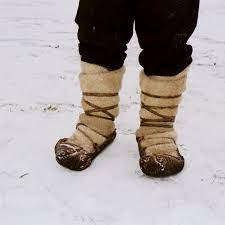
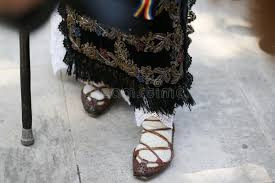
They wore simple leather shoes that are called opinci. The oldest type of footwear is peasants sandals which were made from cow, ox or pig. They also had black sheepskin hats. The shepherds wore this specific style in the past.They had no other ideas how to make shoes so they came up with the idea of using these as they do keep your feet warm during cold temperatures because it is layered with pigs skin.Although things have changed since that period and Romania has a bigger understanding with how to make proper shoes and by not killing so many animals.

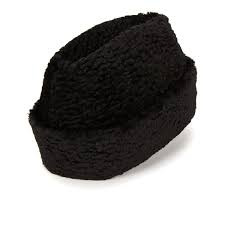

Their are four types of hats which province from specific regions: (căciulă țuguiată, moțată, cujmă) as the main ones.
some of these styles are shared with the other Balkan nations. Most fur hats are black, although white (caciula) are worn in parts of Banat (region lying in Romania, Serbia and Hungary) and grey in central and northern Moldavia.
It can be worn peaked, with its top bent forward, back or sideways, or with its top sunk inwards, depending on local fashion. It is worn in Banat, Maramures, Moldavia, Muntenia and Oltenia. In the Banat Mountains, the cap is sometimes worn with the fur on the inside and a narrow white fur hem at the base. Such hats were worn by free men.
A round low cap known as cujmă rotilată is worn in Maramureș, consisting of two parts: a long band forming a cylinder and a round top sewn to the upper edge of the cylinder.
Caps made of a single piece of fur are also found in Maramureș and Oaș. These are made by stretching the raw fur on a spherical wooden shaped block which makes it take the shape of the head.
A cylindrical fur cap with the top larger than the base căciulă joasă is worn by shepherds on both sides of the southern Carpathians in Mărginimea Sibiului, Maramureș, Muntenia, Oltenia and Vrancea and also in Bărăgan Plain and Dobruja due to these areas being used for summer pastures by the Carpathian shepherds

Another jacket made of fleece is called gubă. It is worn by both men and women in winter and is made of wool in its natural colours. It has a fluffy effect made by brushing up the wool or adding additional yarns into the woven wool. The square-shaped jacket extends to the hips. The edges are bound with dark velvet and it is lined with patterned cloth.
Theses coats have a very look alike aspect in style with Romanian traditional clothing and are similar to Dior collections. This video will show you and explain how Romanians traditional clothes look like during the past to present and similar to The biggest brand of Dior. Romania's type of clothing used to be called Bihor. This is where Dior got some of the designs and ideas from. This is more information that is explained in this video and showed you how it came to this.
youtube
Womens clothing
Patronesses and peasant women wore identically tailored shirts, distinct being only the methods used for decoration. Like them, patronesses wore on head long head kerchief called (maramă) that is a head covering made of floss silk or flax, that hung on back. They had a great aesthetic and social value for women. Young girls accustomed to walk bareheaded whereas the married women wore the head covering.

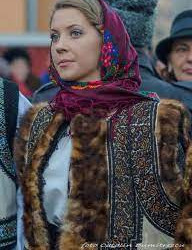
The three-part decor code of this pleated shirt is almost the same, the (altiță) that is derived from Serbian, there is a single horizontal row on the sleeve, known as (increț), and diagonal stripes below the armpit and shoulder called the (râuri). The upper arm embroidery characterizes the entire costume. Each blouse tells a compelling story about the region it comes from through the symbols and colors used.
Altita

Incret
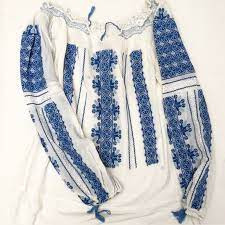
They also wore Ie which is the type of shirt of a typical gathered form of the collar, which has existed since ancient times. It is also known as the "Carpathian shirt" similar to the Slavic (Bulgarian, Serbian, Ukrainian etc.).

Women also wore black or greyish brown woven material that covered the front of the body (like an apron) and the back called a (fota) a richly ornamented wrap-around skirt made out of a rectangular piece of woollen fabric worn at the waist.


This idealisation of Romanian clothing appeared in the mid 19th century in order to differentiate their culture to the other ones. Nowadays, the Romanian people as a national motif during certain events and celebrations in folk dances.
Marandici, I. (2022). Traditional Romanian Fashion With an International Appeal. [online] 3 Seas Europe. Available at: https://3seaseurope.com/traditional-fashion-romanian/.
0 notes
Text
Global Flexible Packaging Market to Exhibit 4.66% CAGR by 2028
Triton Market Research presents the Global Flexible Packaging Market segmented by Raw Material (Paper, Bioplastic, Aluminum, Plastic), Application (Food & Beverage, Pharmaceuticals, Cosmetics, Others), Type (Stand-Up Pouches, Flat Pouches, Rollstock, Gusseted Bags, Wicketed Bags, Wraps), Printing Technology (Flexography, Rotogravure, Digital Printing, Others), and Geography (North America, Latin America, Europe, Asia-Pacific, and Middle East and Africa).
It further discusses the Market Summary, Industry Outlook, Impact of COVID-19, Key Insights, Porter’s Five Forces Model, Market Attractiveness Index, Vendor Scorecard, Industry Components, Key Market Strategies, Drivers, Challenges, Opportunities, Competitive Landscape, Research Methodology & Scope, Global Market Size, Forecasts & Analysis (2022-2028).
Triton Market Research’s report states that the global market for flexible packaging will expand with a 4.66% of CAGR during the forecasted period of 2022 to 2028. In terms of volume, the market is expected to progress at a CAGR of 4.01% by 2028.
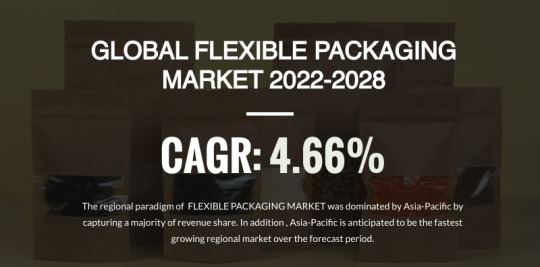
Request free sample:
https://www.tritonmarketresearch.com/reports/flexible-packaging-market#request-free-sample
Flexible packaging is the least-expensive material that comes with great durability and ensures product protection. These are an ideal solution for businesses looking for eco-friendly and customized packages that suit the product, brand, and other needs. Moreover, the shift to a green environment has influenced industries to adopt convenient and environment-friendly packaging. Besides, the rising trend of portable products such as food, beverages, pharmaceuticals, etc., has significantly boosted the demand for flexible packaging. The growing urbanization has also increased consumers’ focus on convenience in packaging, allowing manufacturers to provide innovation in packaging options. Hence, these factors are driving the market’s growth.
However, the cost of operations has constantly increased over the years. The materials account for 60% of the total expenses, followed by labor, manufacturing, and marketing costs. Therefore, manufacturers are increasing product costs to overcome the price rise of materials, especially aluminum, plastic, and resin. Such an increase in operational costs is restraining the growth of the flexible packaging market.
The Asia-Pacific holds the largest market for flexible packaging and is expected to bolster over the forthcoming years. The upsurge in the market is attributed to the rising packaged food market, growing plastic production, and private investments in flexible packaging. Moreover, due to the availability of low-cost labor and increasing domestic demand, the regional manufacturers are focusing on investments, expansions, acquisitions, and new product launches to expand their market share. Thus, these developments are expected to augment the growth of the flexible packaging market.
The key companies profiled in the flexible packaging market are Bryce Corporation, TCL Packaging, Takigawa Corporation, KM Packaging Services Ltd, Okura Industrial, American Packaging Corporation, Coveris Management GmbH, Solvay SA, Sealed Air Corporation, Kohjin Film & Chemicals Co Ltd, Mitsui Bussan Packaging Co Ltd, Bischof + Klein SE & Co KG, EPAC, Rengo Co Ltd, Michelman Japan LLC, Flair Flexible Packaging Corporation, Dai Nippon Printing Co Ltd, Hosokawa Yoko Co Ltd, Amerplast, Amcor Ltd, Mondi Group, Korpack Corporation, Asahi Kasei, and Handoo Package Co Ltd.
The market shows a high degree of competition due to a large number of manufacturers providing product differentiation. Such manufacturers introduce application-specific products along with technological innovation in product design and raw materials, thus increasing the competitive rivalry.
Contact Us:
Phone: +44 7441 911839
#Flexible Packaging Market#Chemicals and Materials#Plastic Industry#market research report#market research reports#triton market research
0 notes
Text
Linerless Labels Market- Growth, Trends, Covid-19 Impact, and Forecast (2022 - 2028)
The Global Linerless Labels market was valued at USD 2.18 billion in 2021 and is expected to reach USD 2.79 billion by the year 2028, at a CAGR of 3.6%.
Labels that do not have a release liner and are sensitive to pressure are called Linerless labels. The labels are wrapped on a roll having release coating applied to the front of the facestock. This avoids the adhesive, applied to the underside of the facestock, from sticking to the label below it on the roll. Moreover, a product may have multiple labels such as bottom ingredients labels, a face label, and additional store labels depending on the manufacturer. These labels provide information about what is being purchased to the customer and get plastered all over a package randomly. Furthermore, by utilizing linerless labels, more of the product can shine through the packaging and can assure the consumer that a product is fresh and healthy for consumption. Nowadays, labels are no longer restricted to the top and bottom of the package. In addition, products can be entirely wrapped with labels to create a 360° brand that can attract customers. With the advent of linerless labels, manufacturers can easily print on both sides of the label (reverse-side printing), which enhances the brand's ability to connect to a wide range of consumers.
The research presents a full analysis of the pandemic's influence on the whole industry, as well as an outline of market scenarios before and after COVID-19. All of our reports will be modified before distribution to account for the impact of COVID-19 in order to offer a more accurate market prediction. The research study looks at numerous market segments based on type, application, and geographies. The research also includes a competitive analysis of the top Linerless Labels product providers, as well as their most recent advances. This study is divided into three sections: type, application, and region, with market size and forecasts for each area. For the predicted period, yearly compound growth rates for all segments have also been presented.
To learn more about this report, request a free sample copy:
https://introspectivemarketresearch.com/request/15960
Key Industry Players in Linerless Labels Market:
· 3M Company
· CCL Industries Inc.
· Skanem AS
· Cenveo Inc.
· Ravenwood Packaging Ltd.
· Avery Dennison Corporation
· Constantia Flexibles Group GmbH
· Gipako
· Cenveo Corporation
· Hub Labels
· R.R. Donnelley & Sons Company
· Reflex Labels Ltd
· Optimum group
· Bostik
· Coveris Holdings SA
· and other Major Players.
Increasing health awareness and per capita income are key factors that are driving growth for packaged food & beverages, in turn, increasing the demand in the linerless labels market. Several other factors such influence of the western world, changing lifestyle, compact, and confidence in packaged food are all driving the demand for packaged food. The fast-pace lifestyle, and long working hours, are results in greater reliability of consumers on ready-to-eat foods and increased snacking, in turn fueling the demand for linerless labels.
Segmentation Analysis Includes,
By Type:
· Primary
· Variable Information Print
By Composition:
· Facestock
· Adhesives
· Topcoat
By Printing Ink:
· Water-Based Inks
· UV-Curable Inks
· Solvent-Based Inks
· Hot Melt-Based Inks
By Printing Technology:
· Digital
· Flexographic
· Offset
· Letterpress
· Others
By End Users:
· Food & Beverages
· Pharmaceuticals
· Home & Personal Care
· Retail
· Others
By Region:
· North America (U.S., Canada, Mexico)
· Europe (Germany, U.K., France, Italy, Russia, Spain, Rest of Europe)
· Asia-Pacific (China, India, Japan, Singapore, Australia, New Zealand, Rest of APAC)
· Middle East & Africa (Turkey, Saudi Arabia, Iran, UAE, Africa, Rest of MEA)
· South America (Brazil, Argentina, Rest of SA)
Will you have any doubt about this report? Please contact us on:
https://introspectivemarketresearch.com/inquiry/15960
Key Questions Answered in the Report:
· At what CAGR is the Linerless Labels Market projected to grow in the forecast period (2022-2028)?
· Which is the leading segment in the market?
· Which factors are expected to drive the adoption of linerless labels?
· How much Growth Potential does Linerless Labels Market hold?
· What is the regional analysis of the linearless labels market?
The COVID 19 has created an economic shock across the globe and affected almost every industrial sector at the production department and supply chain department. The reduced production of the essential raw materials for the labels has hindered the Linerless Labels Market growth. The lockdown and restrictions in movement in severely affected countries have suffered in receiving the raw materials for the production and delivering the end products.
Purchase This Report: -
https://introspectivemarketresearch.com/checkout/?user=1&_sid=15960
The linerless label industry has a wide range of prospects for new businesses and entrepreneurs. Although the business is still in its infancy, numerous advancements and discoveries are on the horizon. The linerless label start-ups are exerting every effort to provide the best labelling possible. Even some major business firms are utilizing technologies developed by start-ups to make superior inventions.
Related Report: -
https://introspectivemarketresearch.com/reports/lithography-industrial-labels-market/
https://introspectivemarketresearch.com/reports/smart-labels-market/
About us:
Introspective Market Research (introspectivemarketresearch.com) is a visionary research consulting firm dedicated to assisting our clients to grow and have a successful impact on the market. Our team at IMR is ready to assist our clients to flourish their business by offering strategies to gain success and monopoly in their respective fields. We are a global market research company, that specializes in using big data and advanced analytics to show the bigger picture of the market trends. We help our clients to think differently and build better tomorrow for all of us. We are a technology-driven research company, we analyze extremely large sets of data to discover deeper insights and provide conclusive consulting. We not only provide intelligence solutions, but we help our clients in how they can achieve their goals.
Contact us:
Introspective Market Research
3001 S King Drive,
Chicago, Illinois
60616 USA
Ph no: +1-773-382-1047
Linkedin| Twitter| Facebook
Email: [email protected]
0 notes
Text
Enrico Coveri
Enrico #Coveri @EnricoCoveriOff #enricocoveri #creatoredellostile #creatoredellamoda #francescocoveri #perfettamentechic
Enrico Coveri è stato uno stilista, imprenditore italiano, e il fondatore dell’omonima casa di moda fiorentina.

Nato a Prato il 26 febbraio 1952, suo padre fu fabbricante di biciclette e sua madre venditrice di macchine per cucire. Ha lavorato in teatro come scenografo e costumista ed è stato indossatore. Entrò nel mondo della moda sfilando come modello. Era gentile, simpatico, pieno di parole e…
View On WordPress
#100 opere uniche#7 dicembre 1990#@EnricoCoveriOff#Alessandro Borghi#archivio Enrico Coveri#Associazione Tumori Toscana#Azienda Coveri#Biennale Internazionale della Moda#Brand Coveri#Brand fiorentina#Casa Coveri#Caso Mai#Claudia Zanella#Coloratissima#Colori e luci omaggio a Enrico Coveri#Commendatore della Repubblica#Concerto di Natale#Conte Giberto Arrivabene Valenti Gonzaga#Coveri Bandiera Uomo-Donna#COVERI MOVING#Coveri pour Homme#Coveri Story - da Prato al Made in Italy#Cow Parade#Designer Entrepreneur Award#Enrico Coveri#Enrico Coveri Baby#Enrico Coveri Boutique#Enrico Coveri Donna#Enrico Coveri Uomo e Donna#Enrico Coveri Uomo-Donna
0 notes